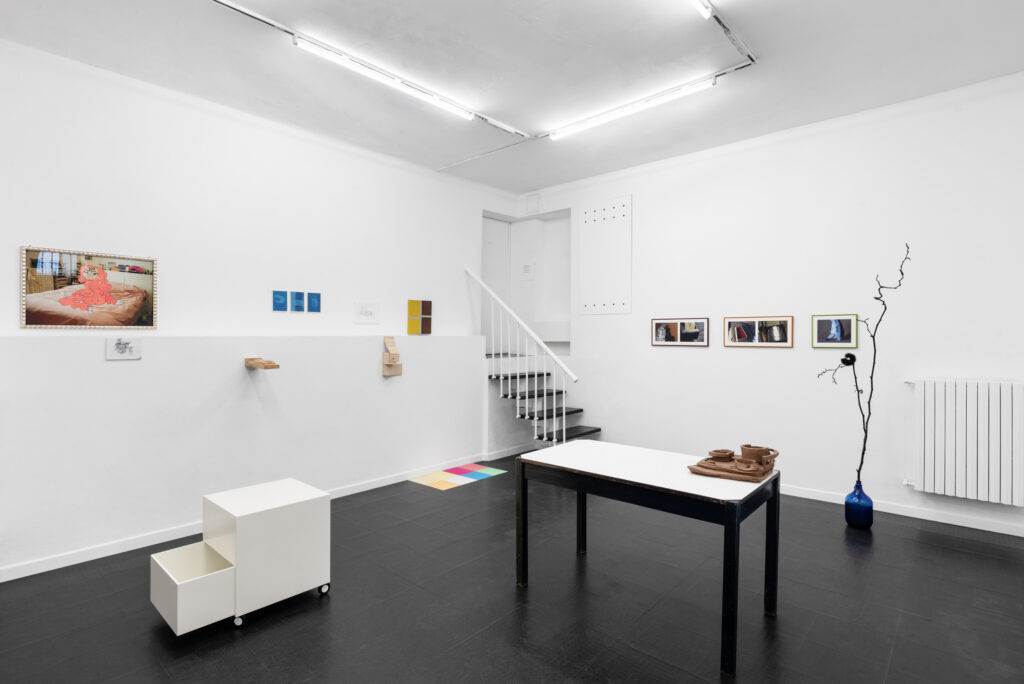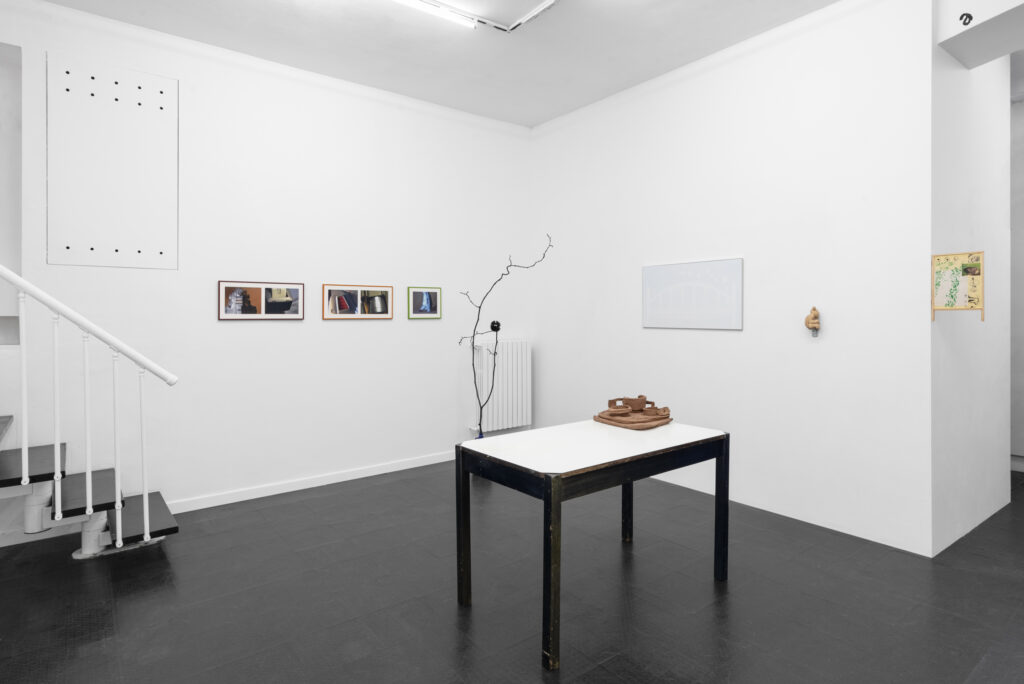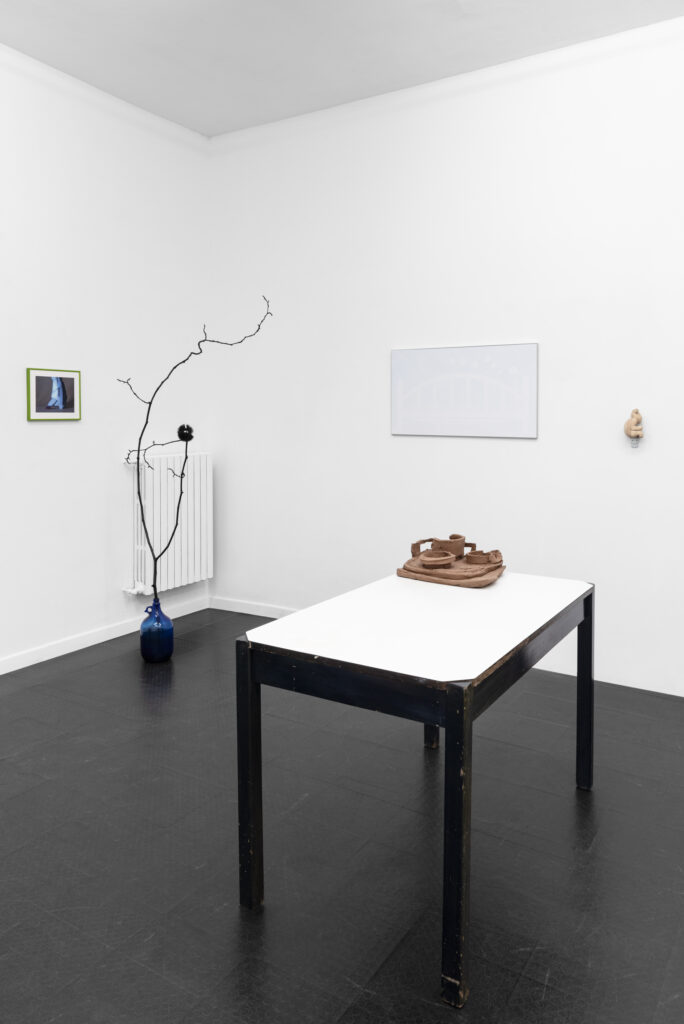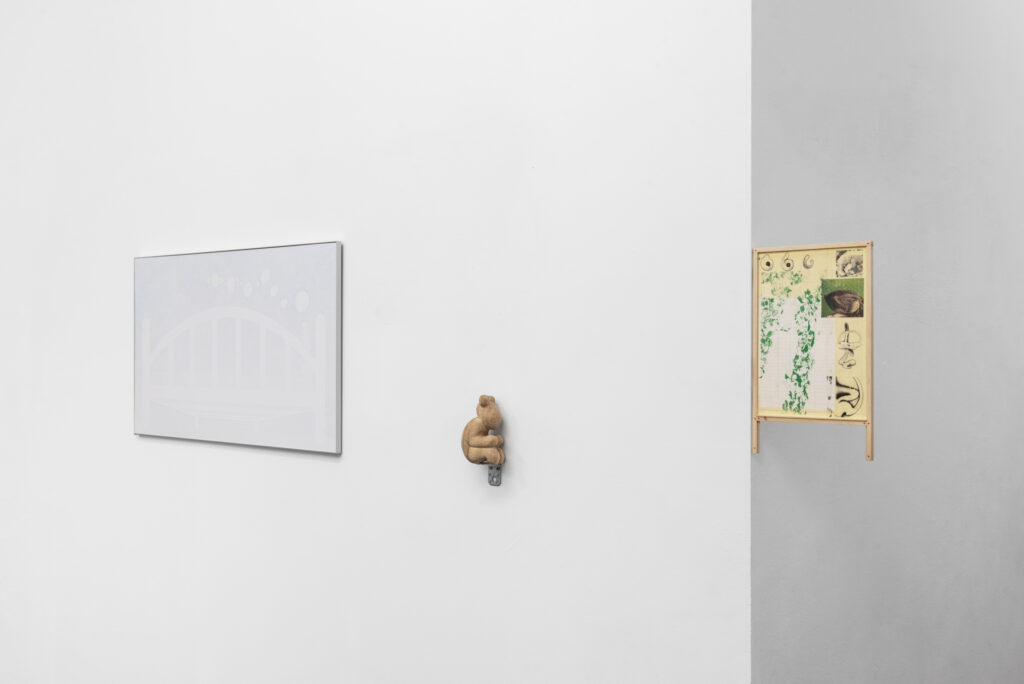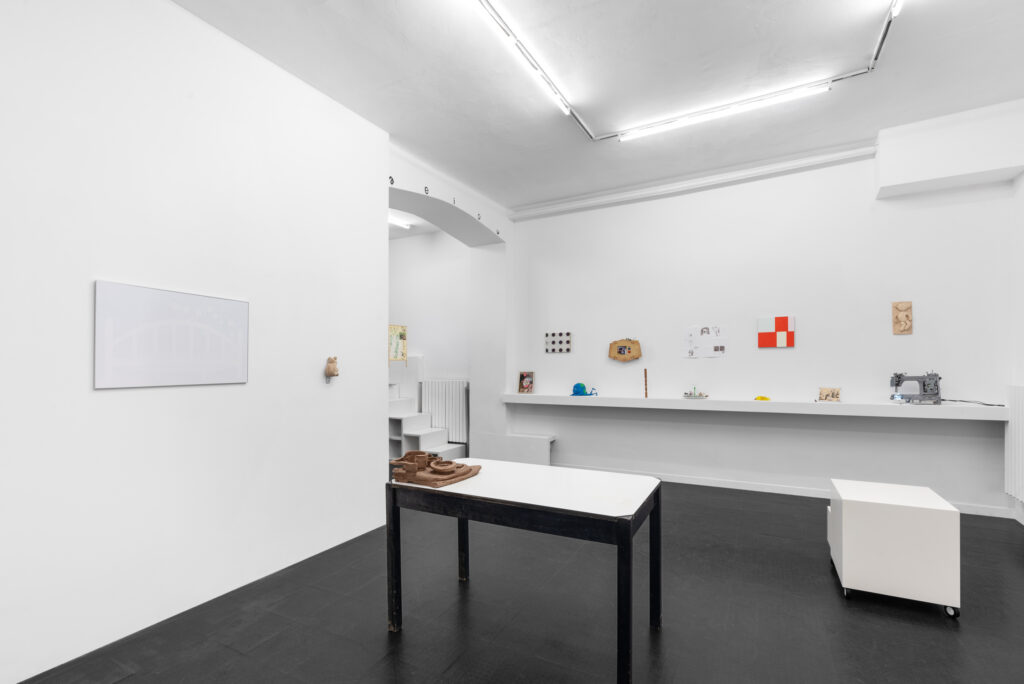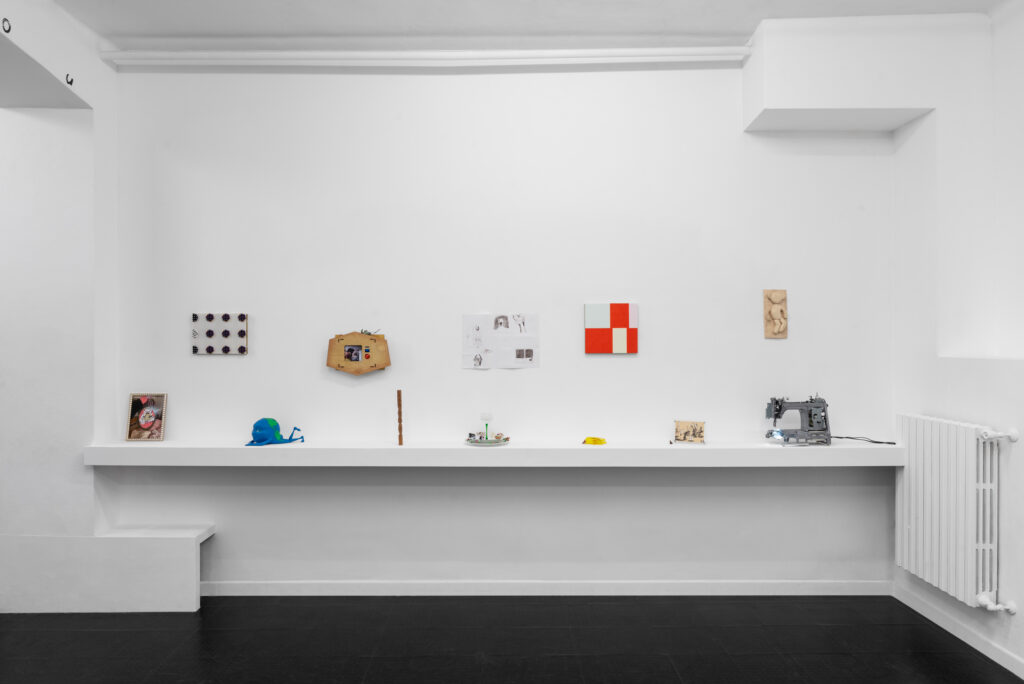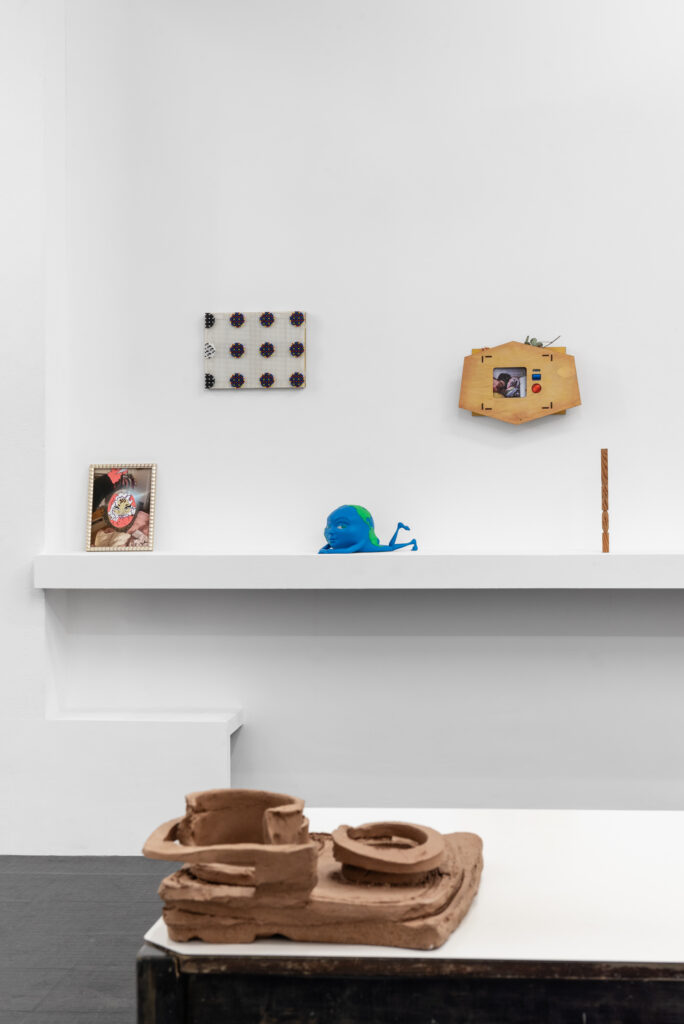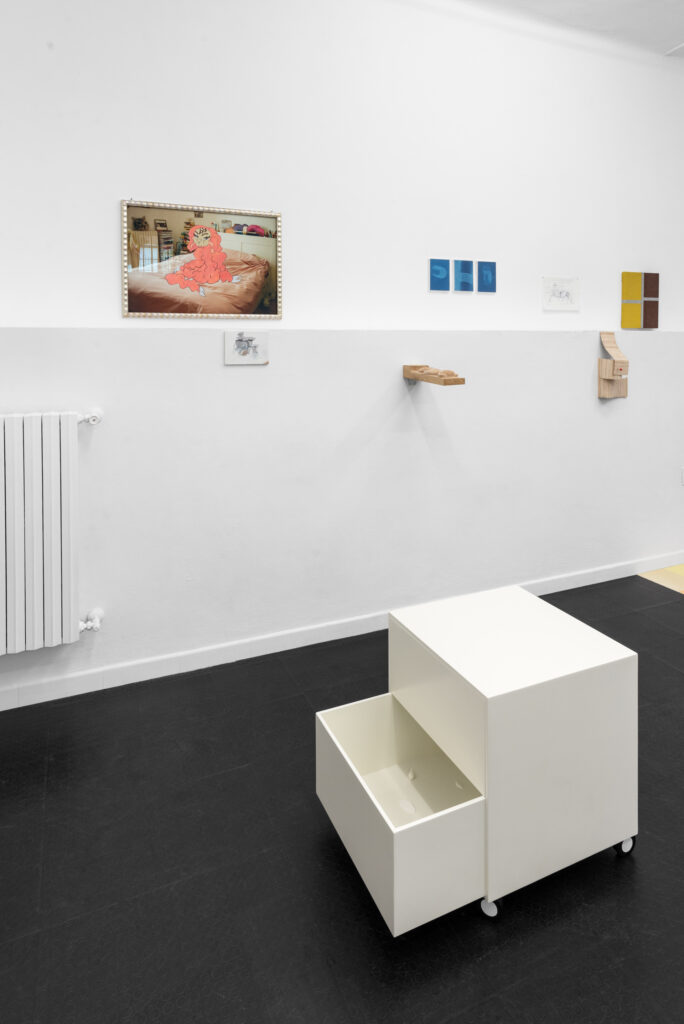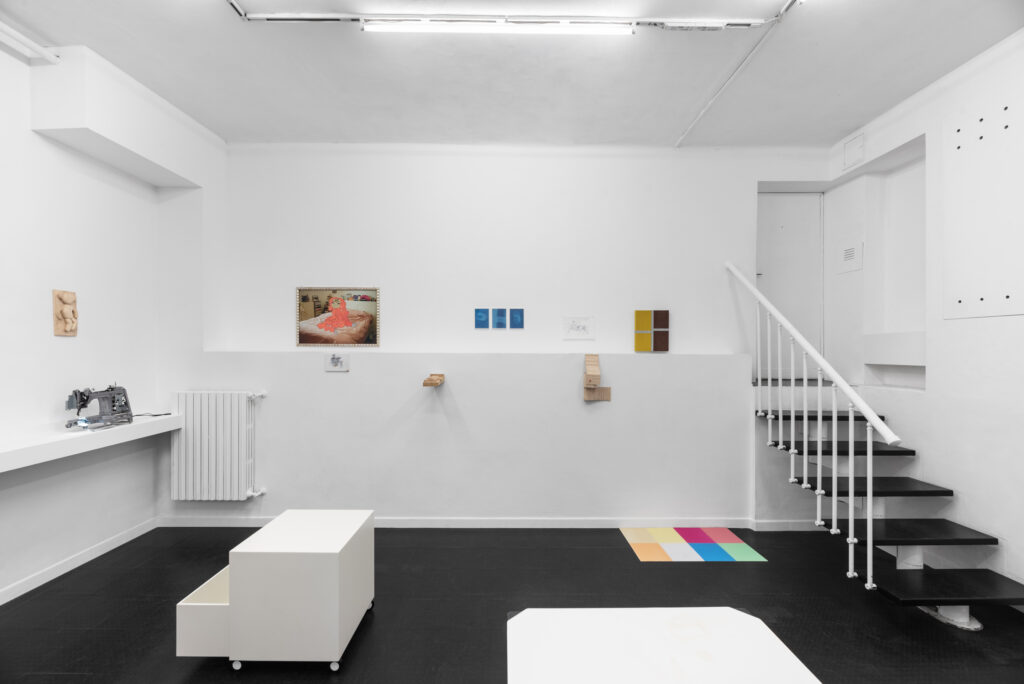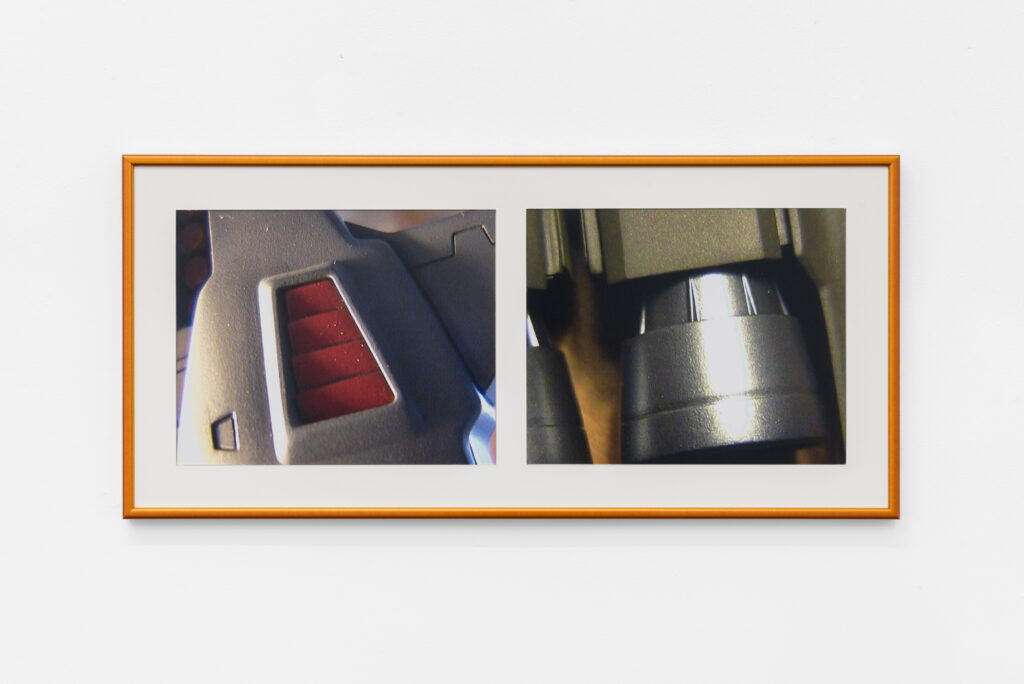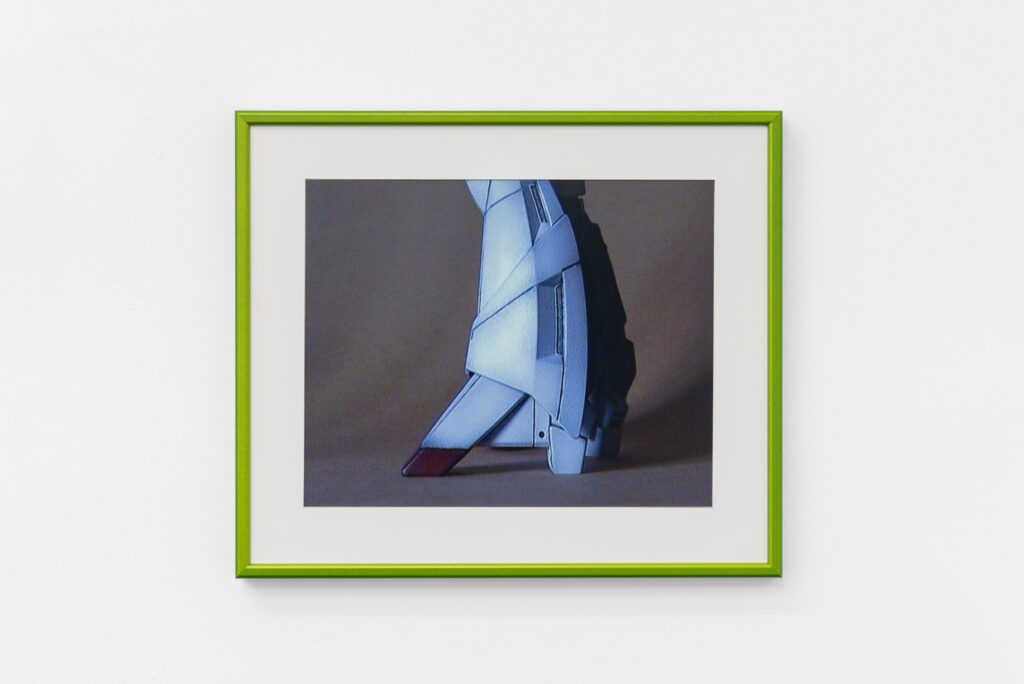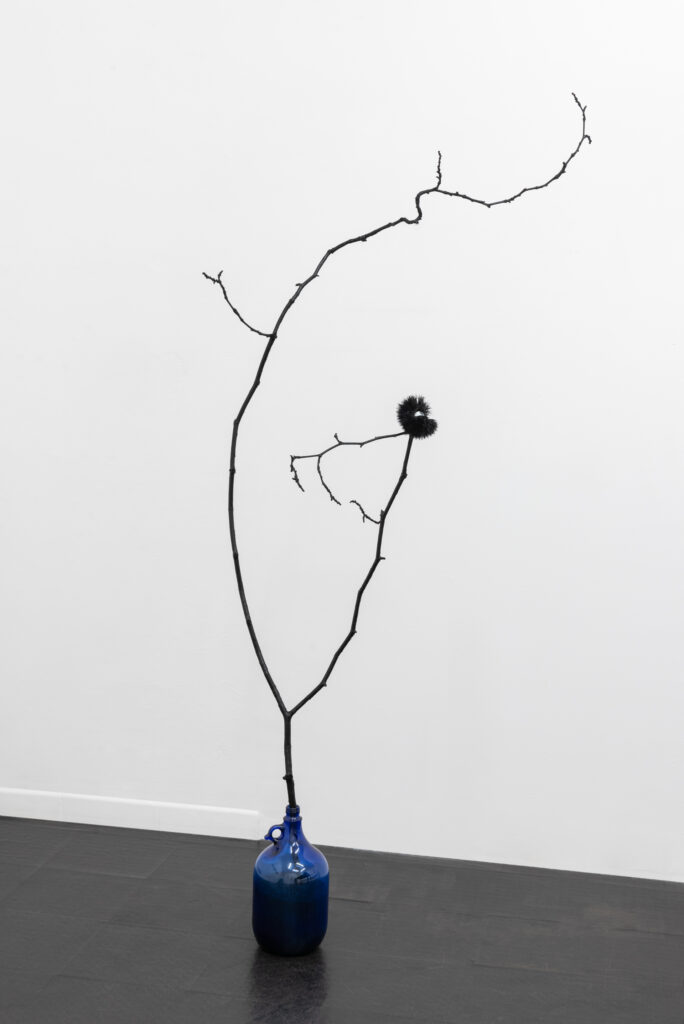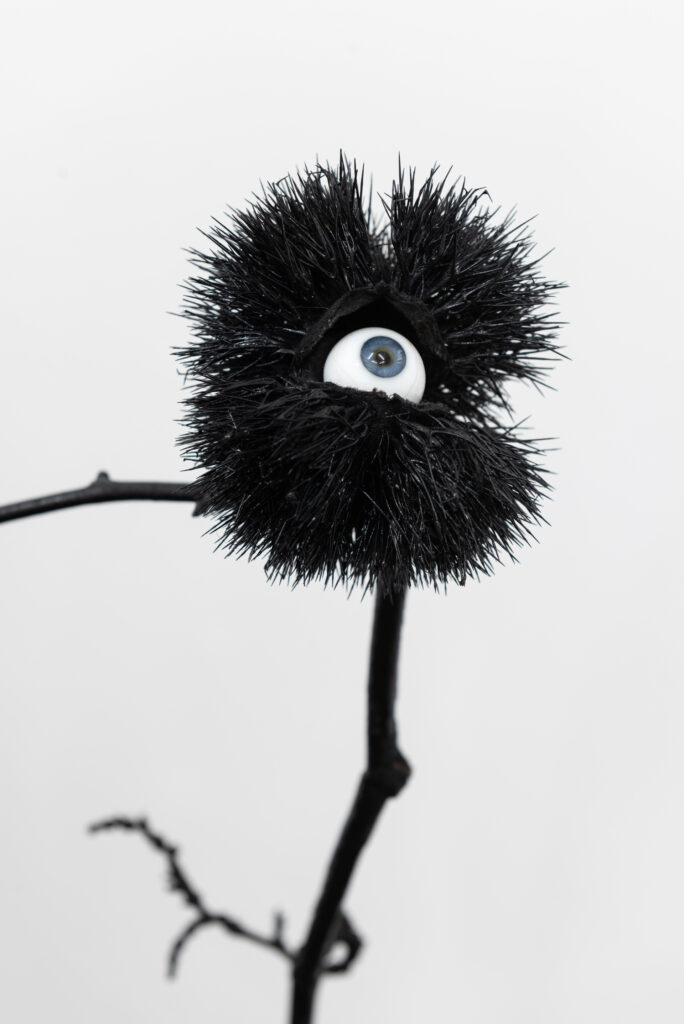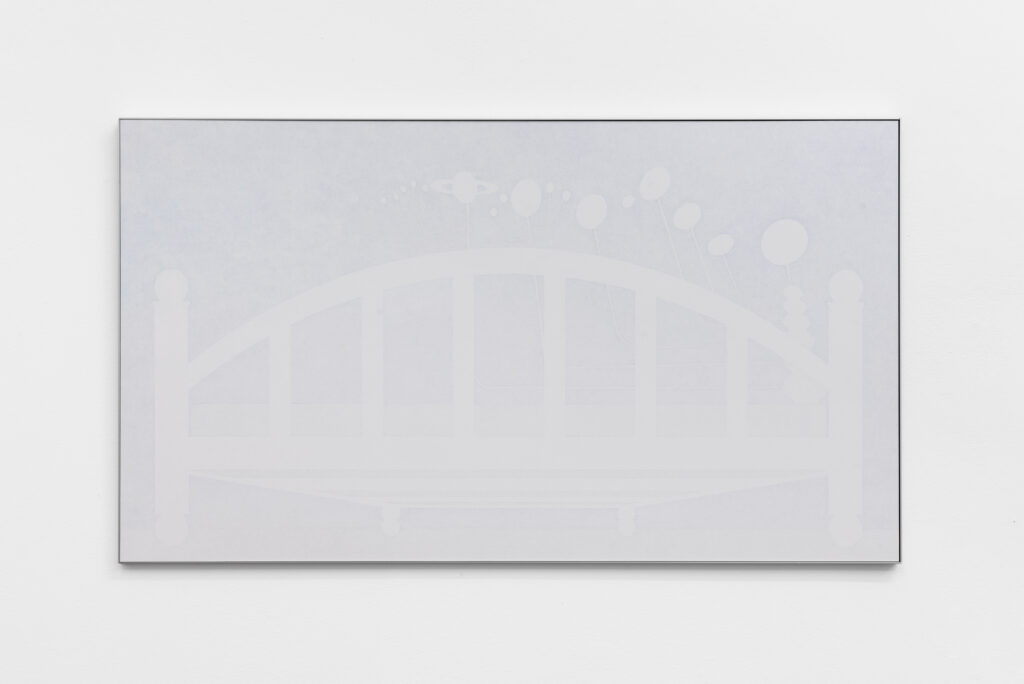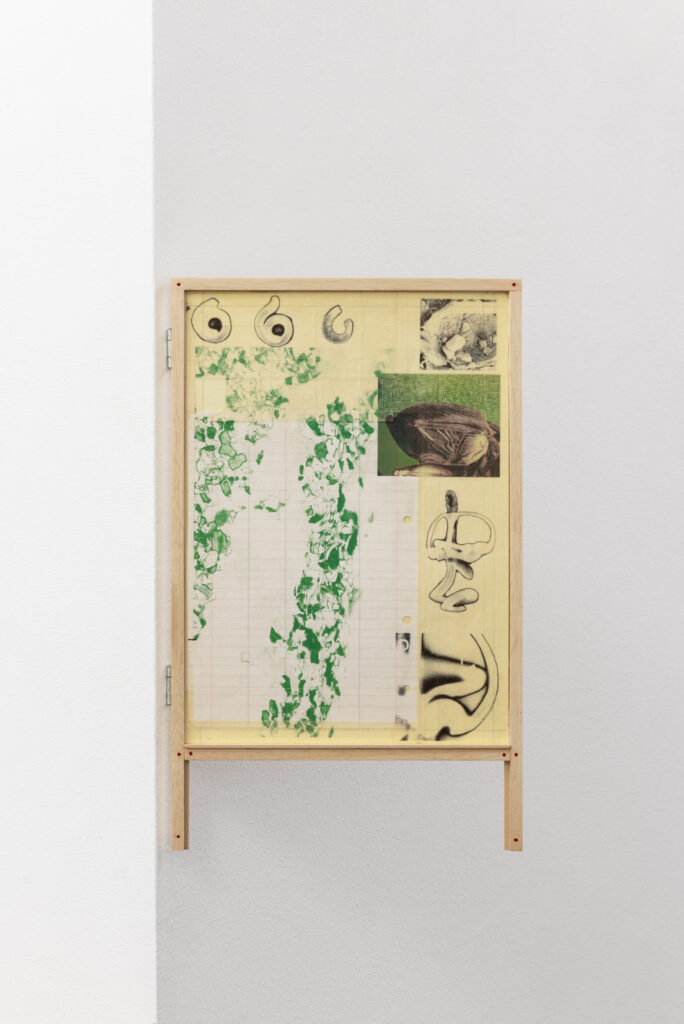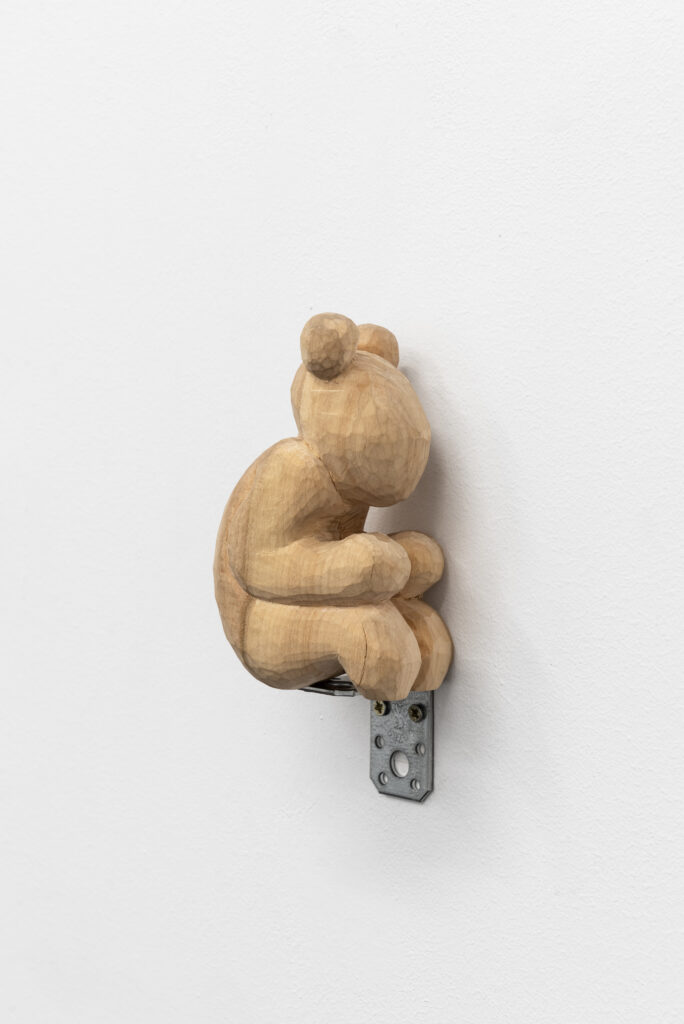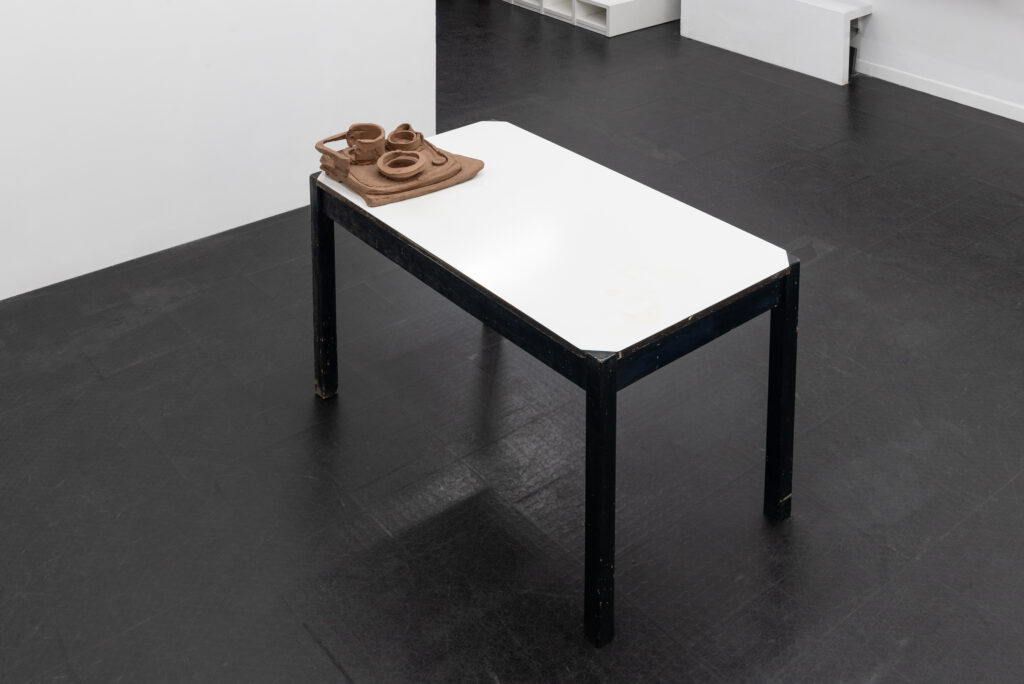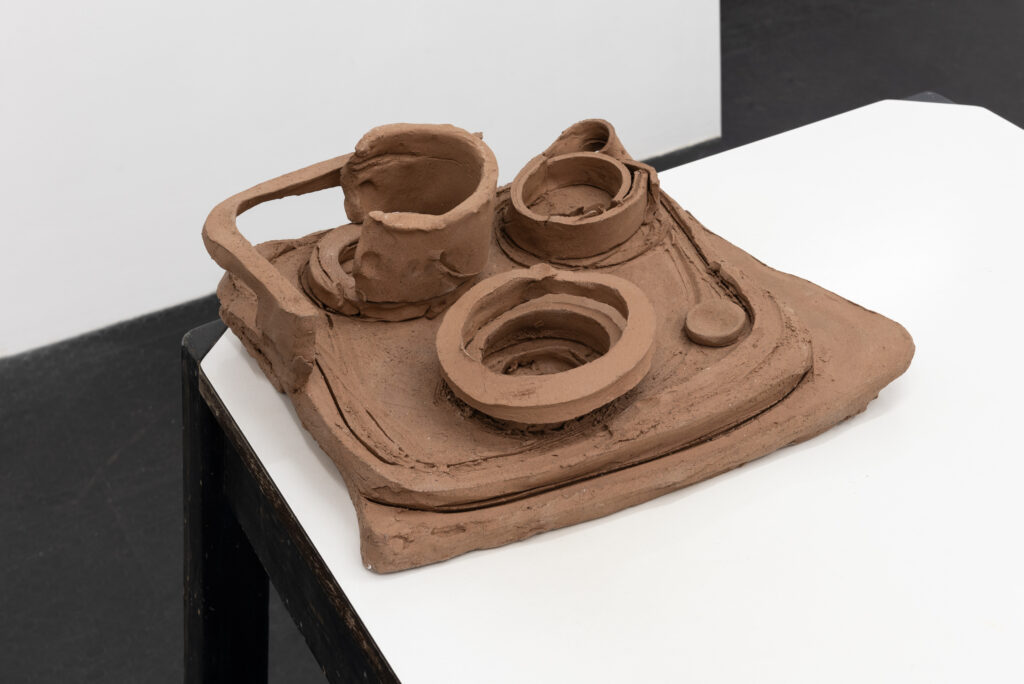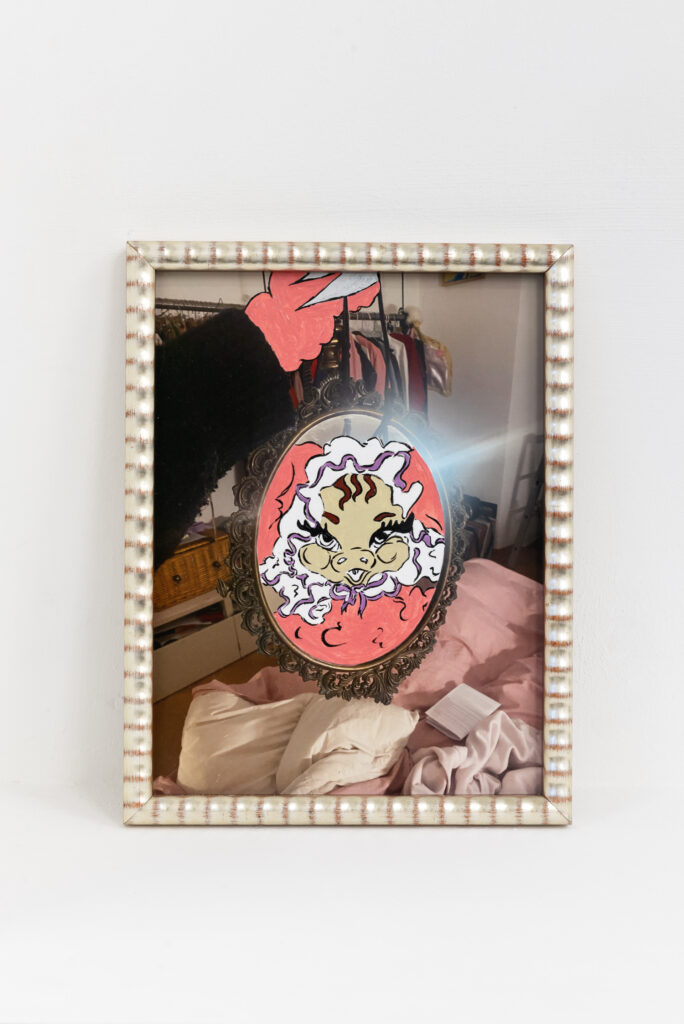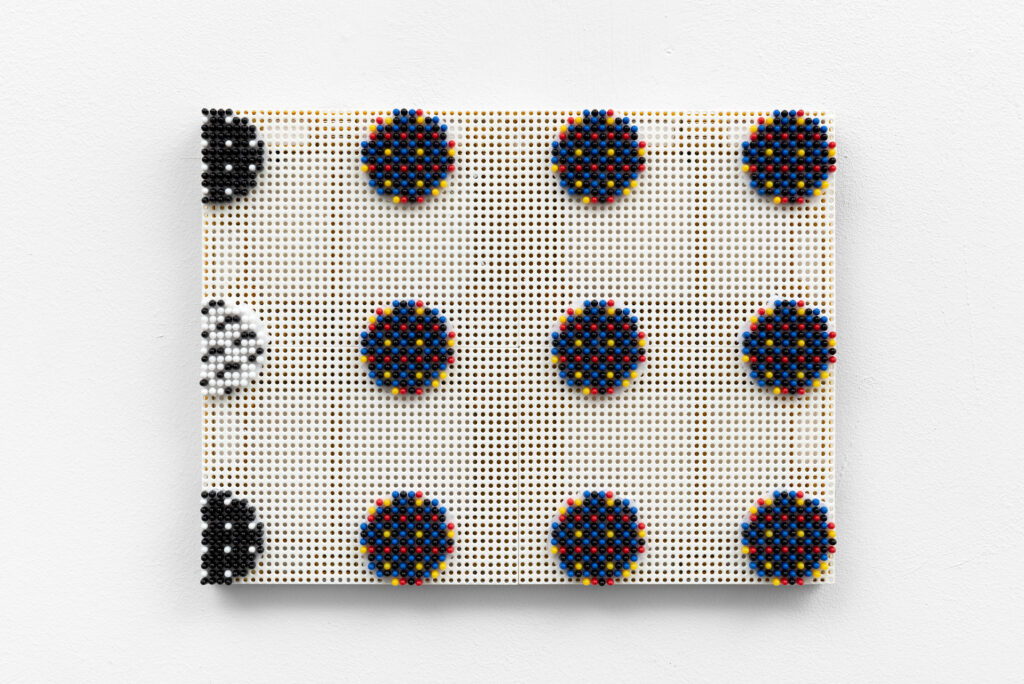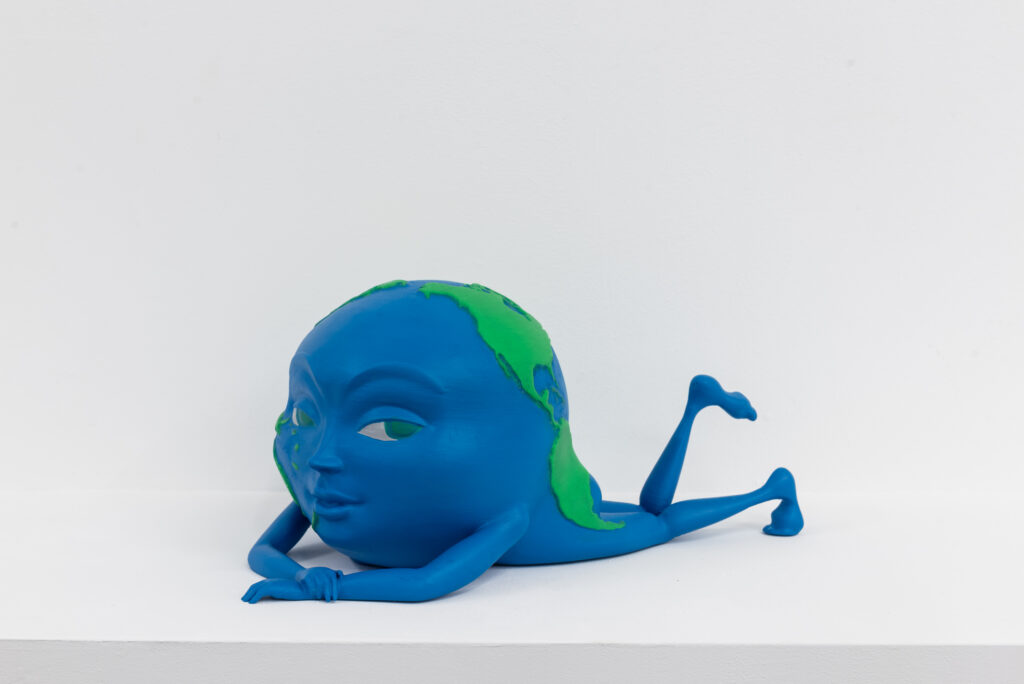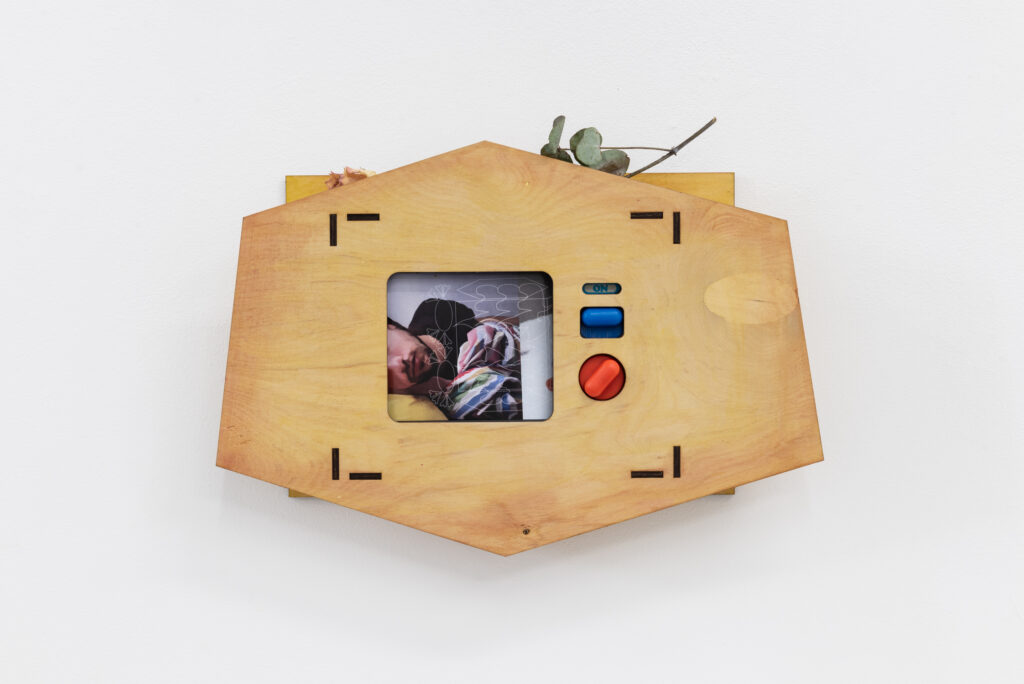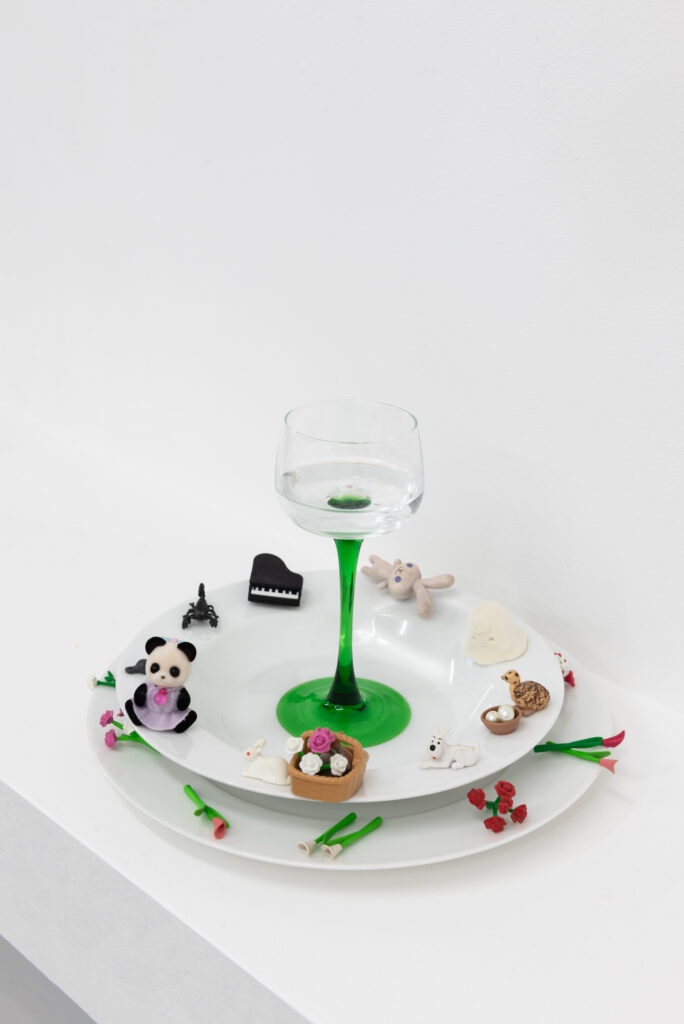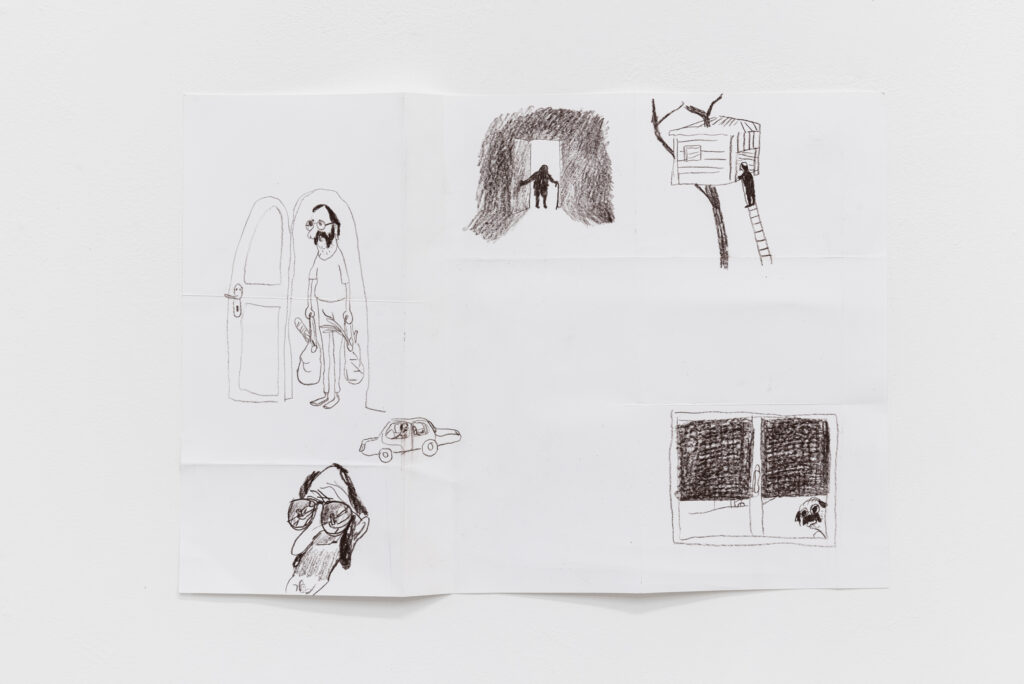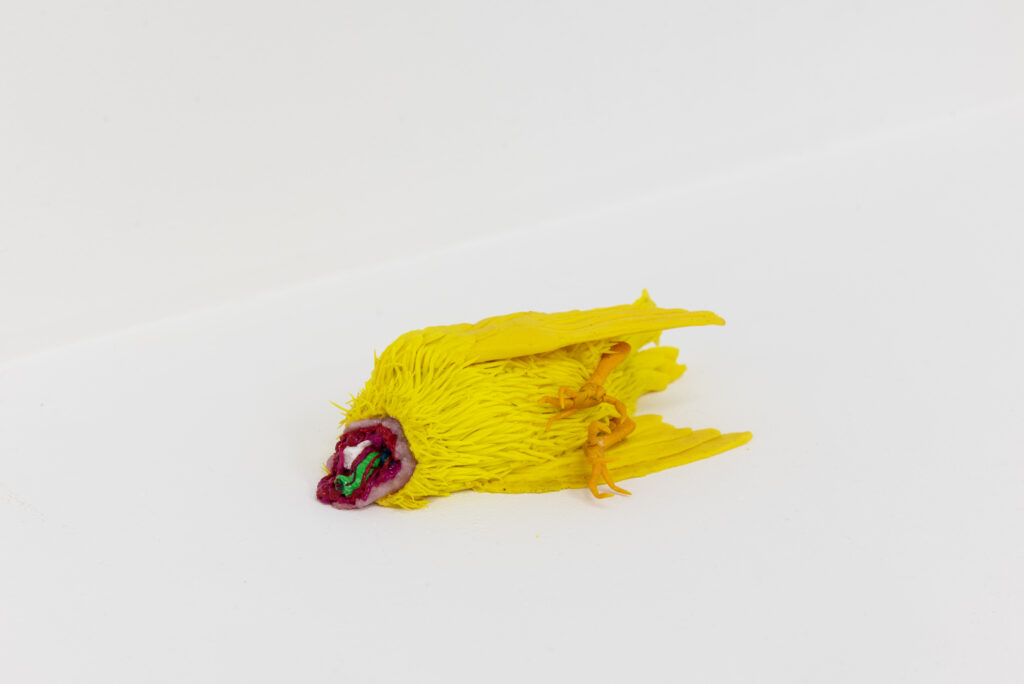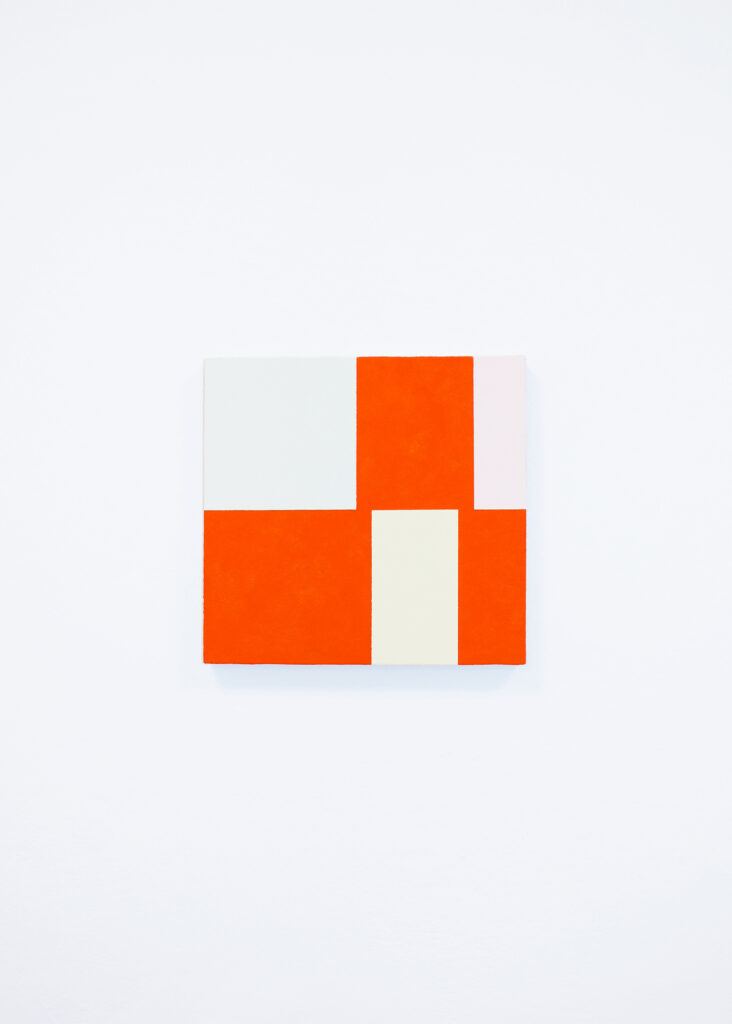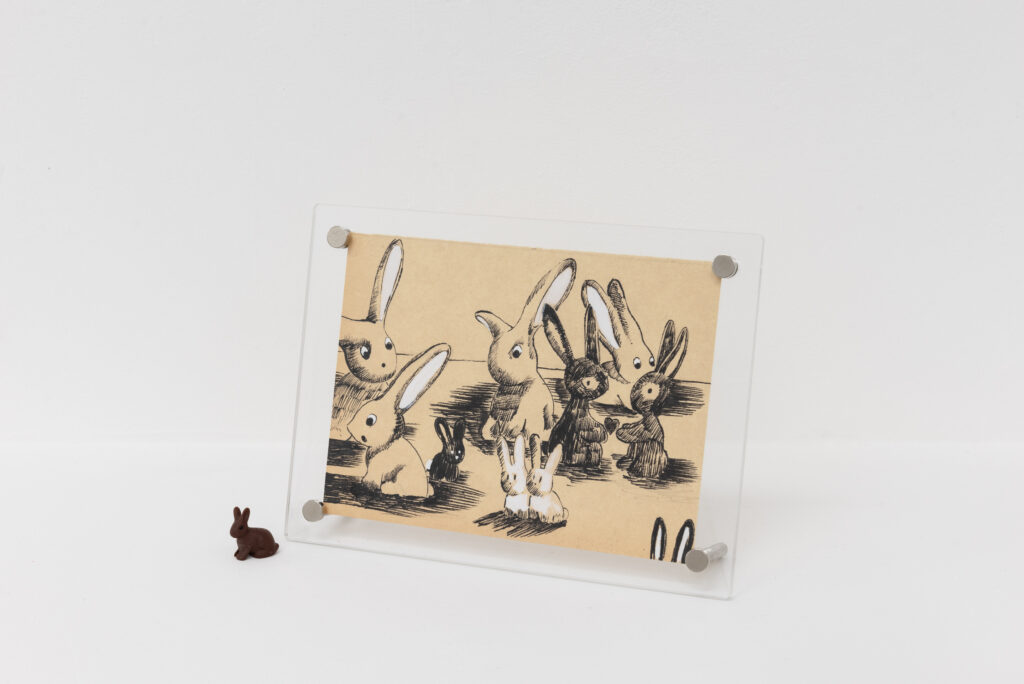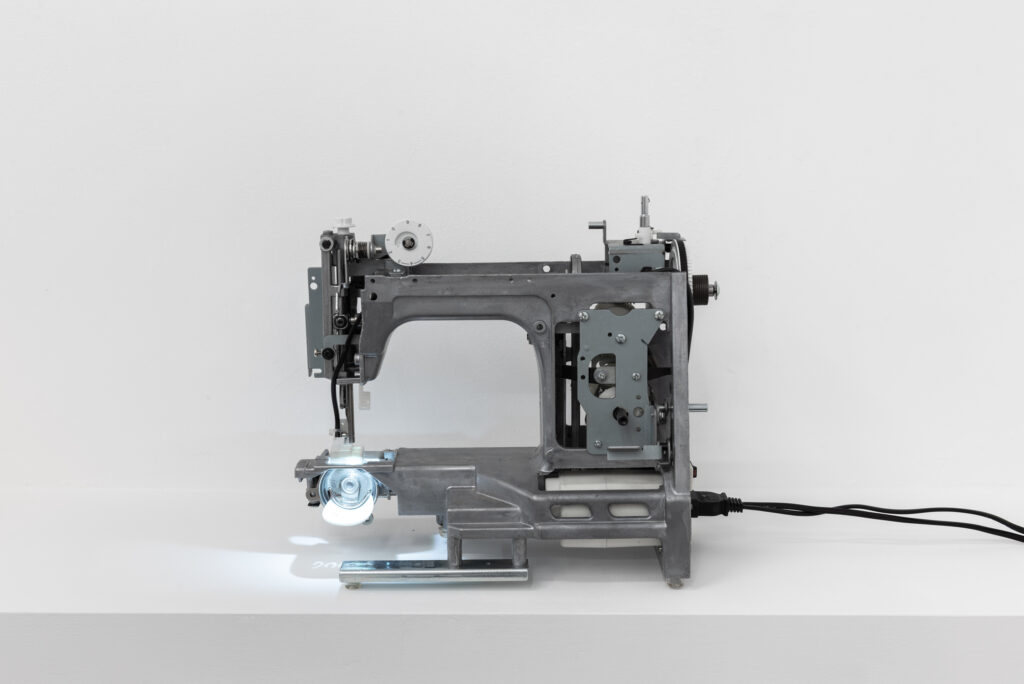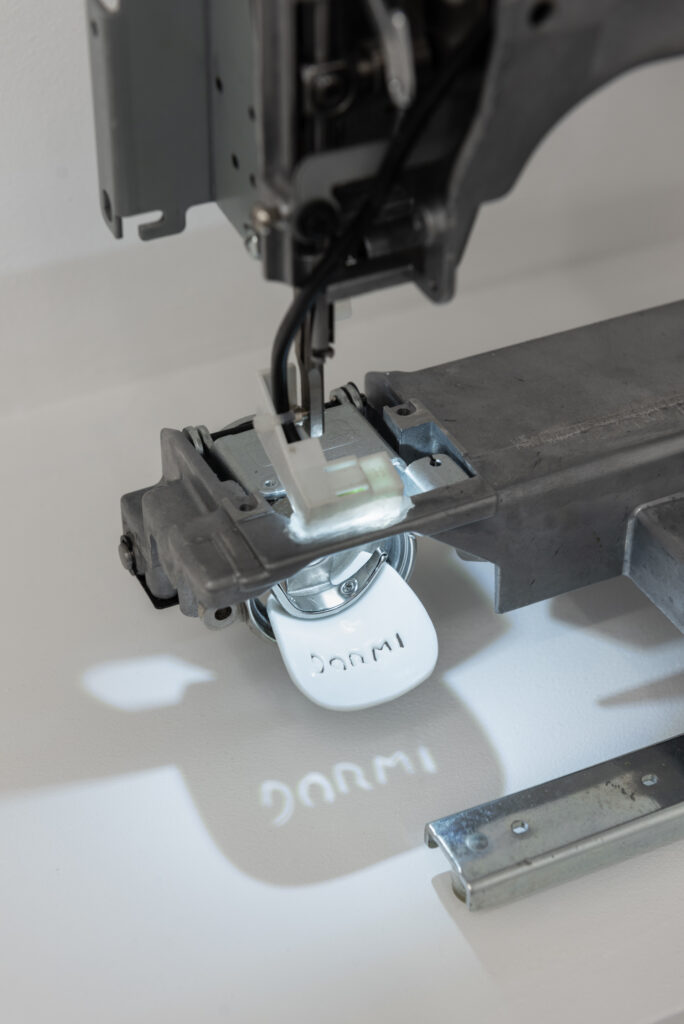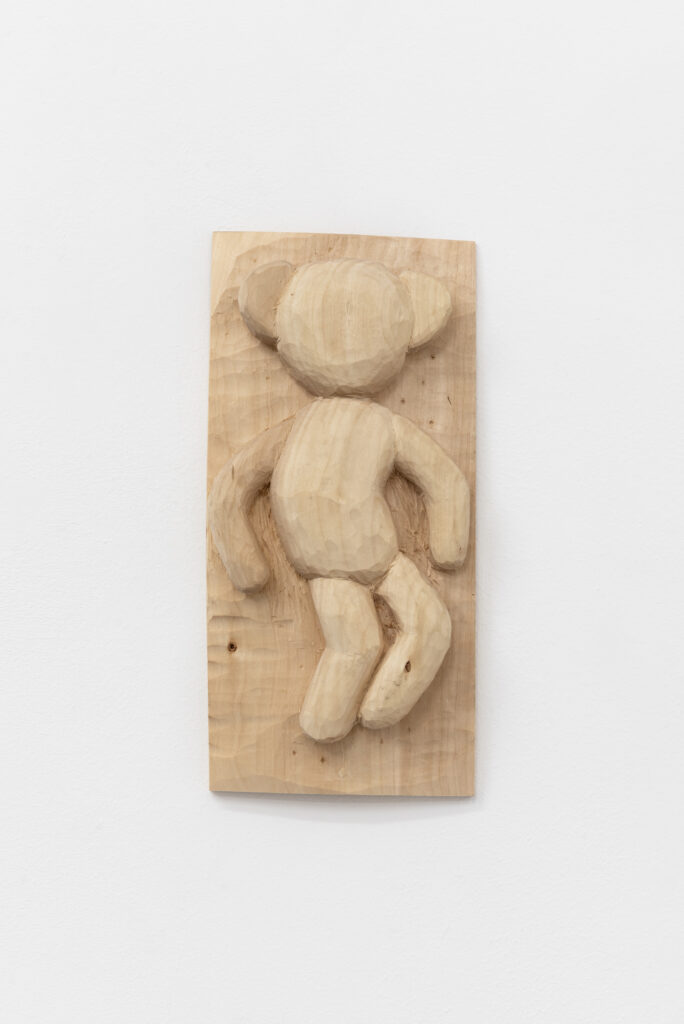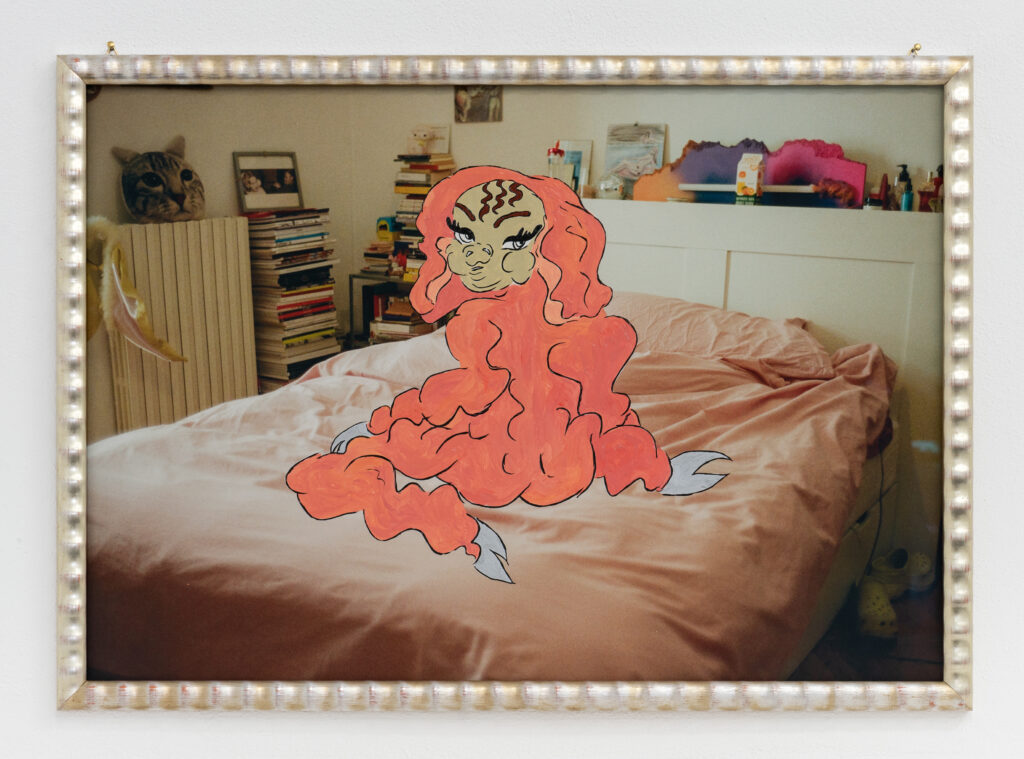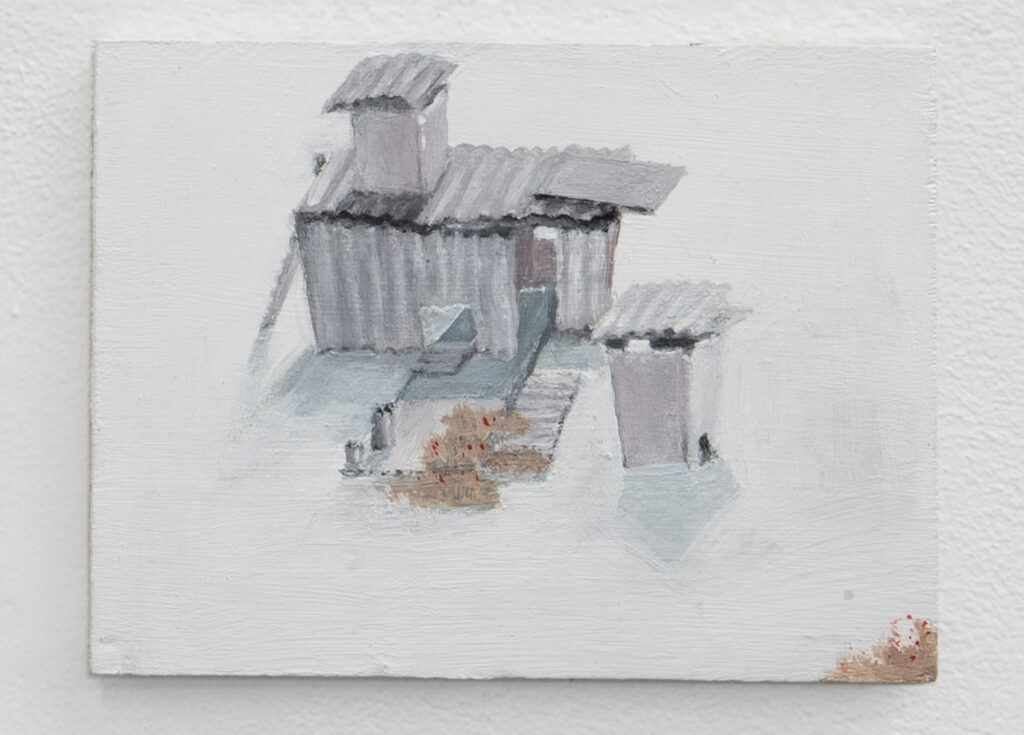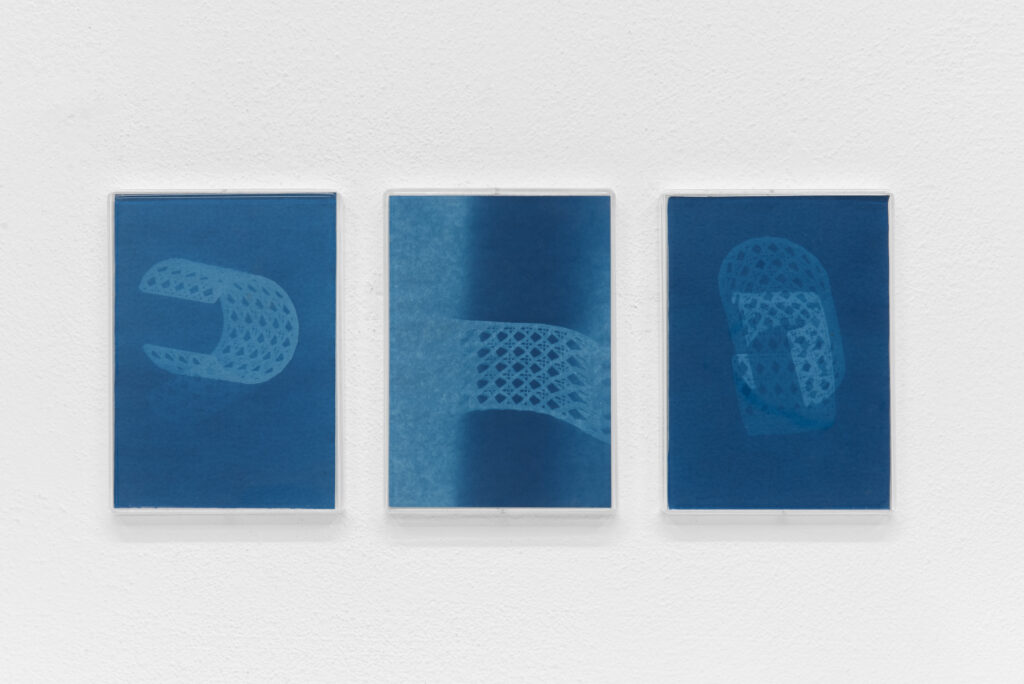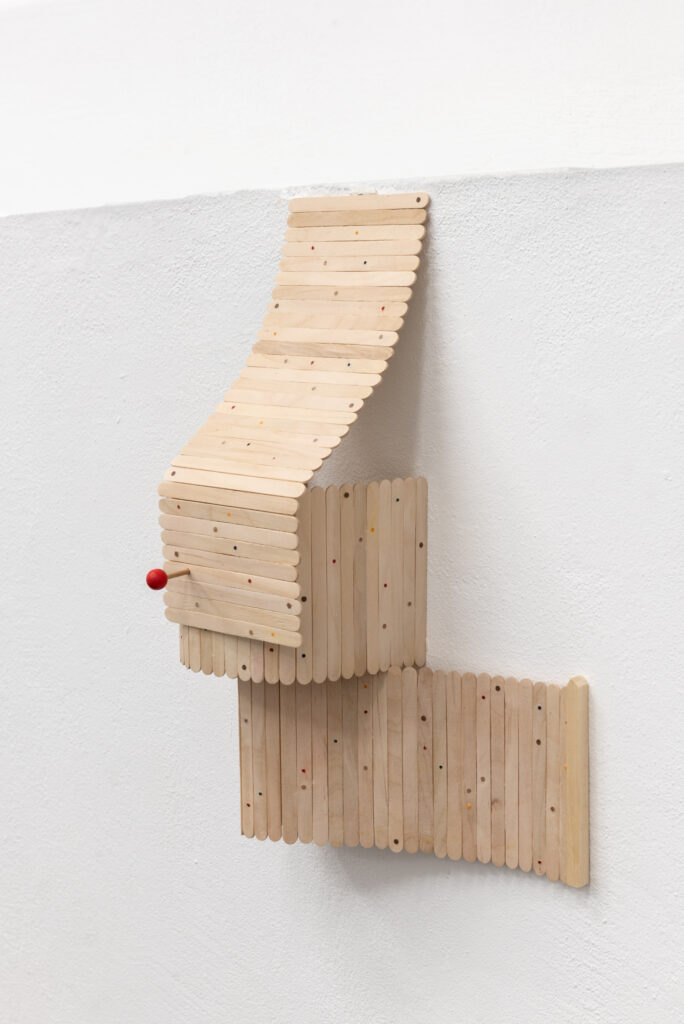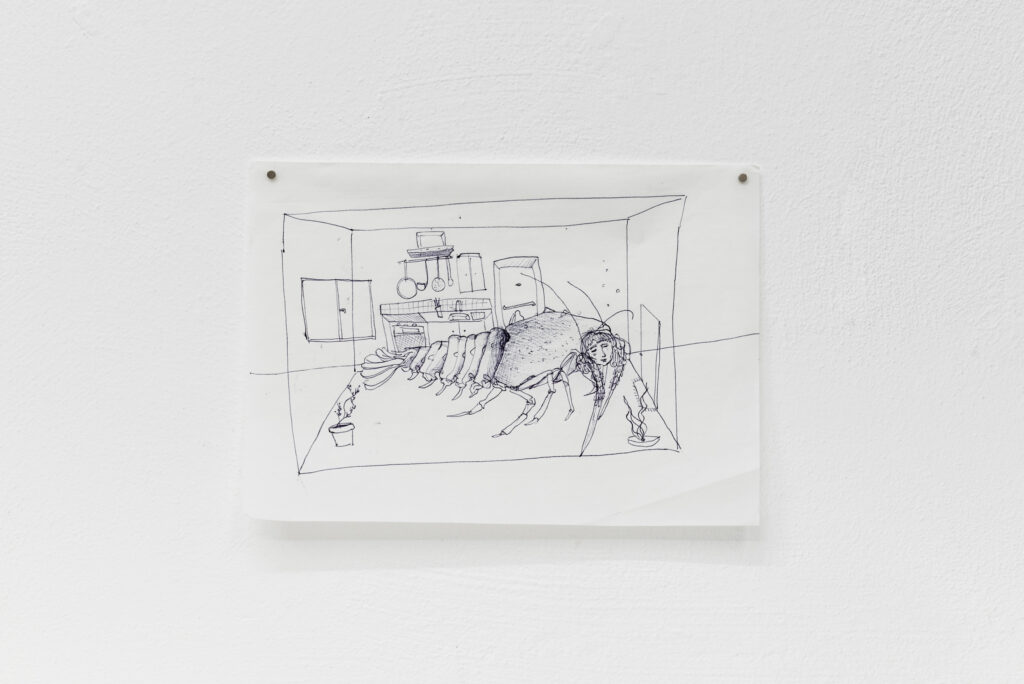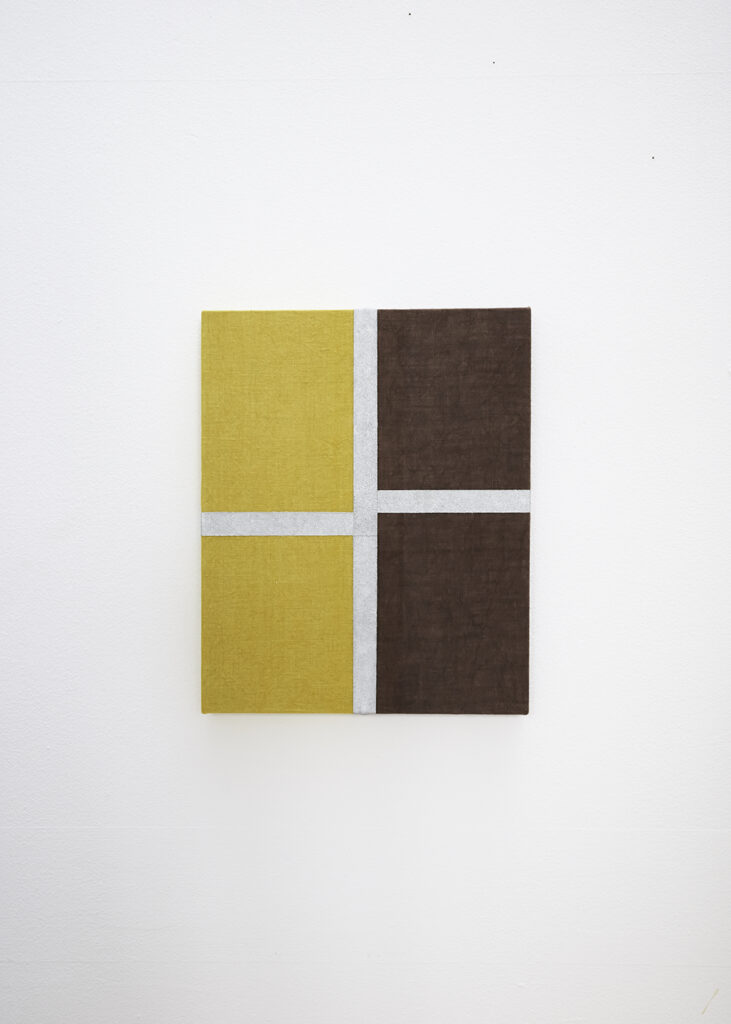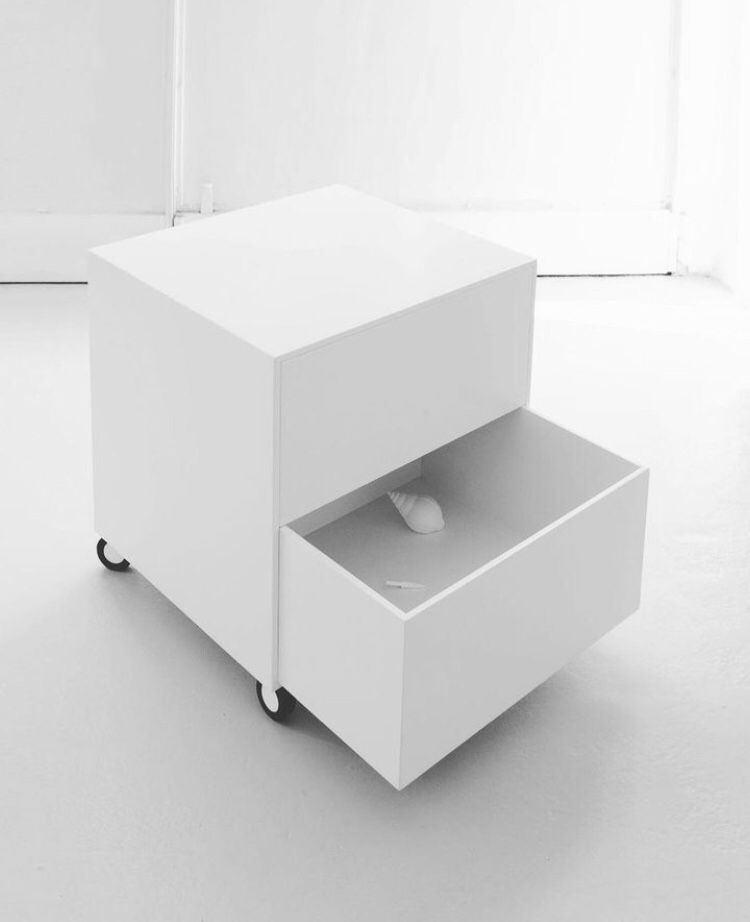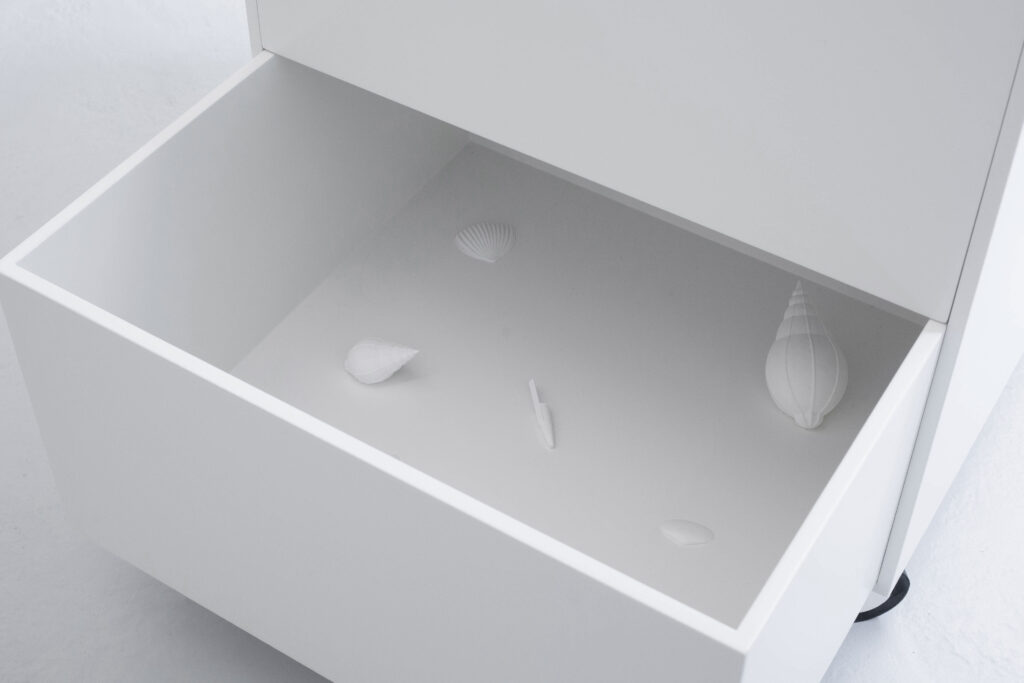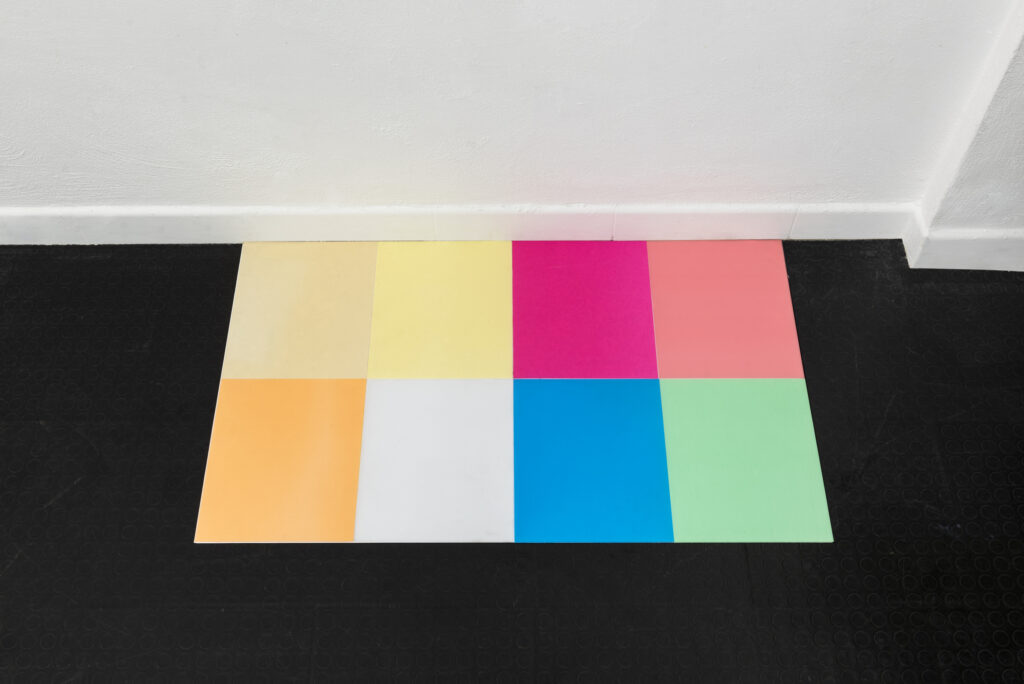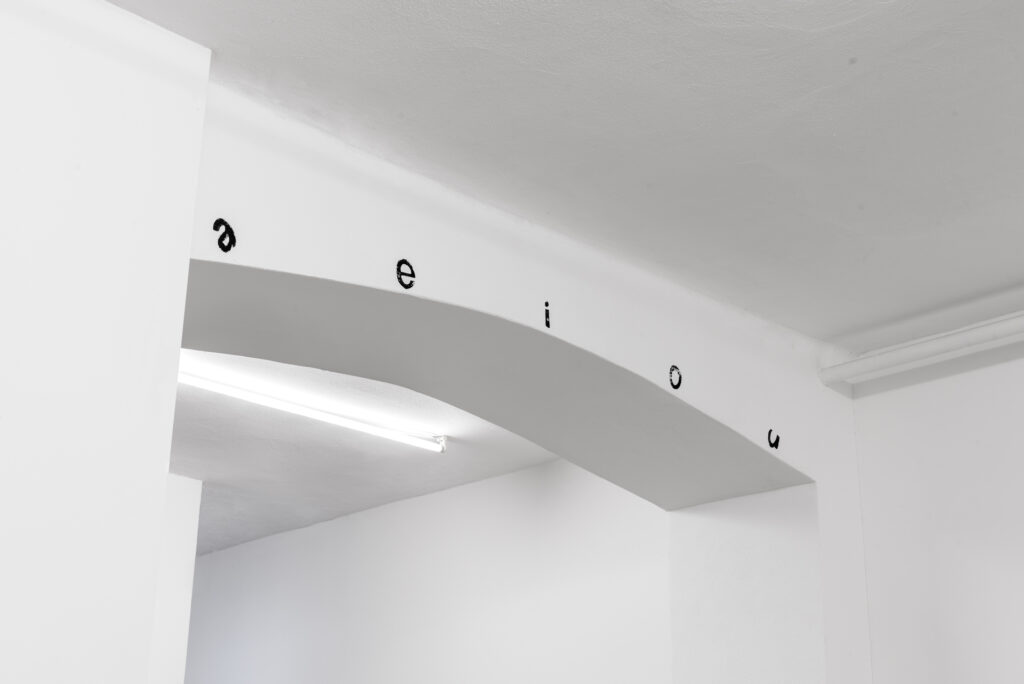La stanza dei figli
Curated by Giulio Bonfante and Alessandro Carano.
Sara Bisacchi, Jack Brennan, Alessandro Carano, Gloria Capoani, Stefano De Paolis, Valentina De Zanche, Gabriele Ferrarini, Dario Guccio, Samantha Lasko, Daniele Milvio, Giacomo Montanelli, Valerio Nicolai, Alice Peach, Giulio Scalisi, Davide Stucchi, Federico Tosi, Eva Vallania.
22/06/2023 – 15/07/2023
“Instead of being afraid of the evening shadows – noted a celebrated Berlin intellectual – cheerful children take advantage of them to amuse themselves”. When Walter Benjamin transcribed this motet found in a playbook from his childhood, he referred to a rather accurate moment: the fever’s juncture, a hushed interval where things softly change their status. There is, however, an underlying theme running through Benjamin’s text.
That is, when the routine becomes jammed and time can finally wrap around itself, the relationship between things undergoes a slight but substantial mutation. Even if we dispense with Benjamin’s theoretical supervision, it is easy to grasp how the child, namely an individual in the most inclusive sense of the term, when left alone before, tries to shape his being himself. He does so, first, to cheat boredom. Then because, in his own way, he is a curious being, a demanding collector and a cautious accumulator. Perhaps he is desirous or even worse, terrified by obsessions that he prefers to relegate to chasms that the gaze cannot reach. In any case, we can assume that he is serenely restless, prey to that restlessness that lays down lightly on things, as an expert monster would, crouching between the slats of an old bed. The mechanism is elementary: faced with the unknown, one reacts by acting and sometimes creating in an iterative, pseudo-engineering, documentary, mocking, tender or cryptic manner. Of this hovering contour, whoever makes (the artist?), like the child, benefits by playing with it. That is, by sublimating (or parodying), what awakens the imagination into a ductile material, a pretext for declarations of intent, but also for nightmares and rhapsodies.
This is why the children’s room resembles a Chinese shadow theatre or a mirage. It has little to do with plans, confidential registers, and litmus tests: it simply stands collective, sometimes breathless, between imagination and material culture. On closer inspection, the room resembles a bizarre axonometric view. Its object and the game as an inventive phenomenon are tenfold and confused: it is like a snout that smiles while whimpering. In a frame teeming with ancient stories, the inhabitant (there they are again, artists) is stubbornly absent. Of them, however, everything speaks, and, above all, everyone whispers. One inevitably becomes a guest from a specific moment in the children’s room. Guests who are sometimes nostalgic, seldom tireless, and often caught up in an unnecessary embarrassment. Moreover, the inscrutable card appears scarcely playable: there are the hosts, the slightly dusty objects, perhaps legitimately irritated, ready to sing.
The so-called “oculist witnesses”, who are at once thing, gesture and tale, scatter clues. Among them are pictograms of minor, unpronounceable incidents that lurk in the memory swiftly mocking. Thoughtful compositions that gratify the pleasure of doing with care and exquisite skill. Surfaces that play with layering and perception offering what only the frame, a repository of secret subtleties, can reveal. Sculptures that dawdle about pretending to be furniture components or trinkets and then ogle with Polyphemus’ eyeball or feral gaze. Sculptures claim their right to invite play or to resemble toys. Structures that tickle the search for a point of view, enlivening the stranger.
Drawings of pleasant microcosms caught on the brink of becoming three-dimensional dioramas. Photographs become stratified animation in space and sense or vociferous devices of romantic mechanics. Presumptive objects that exhibit swallowing, bringing to shore a rebus from a deep time. The children’s room, some would say, is a riddle, not necessarily to be solved.
Valentina Bartalesi
“Invece di aver paura delle ombre della sera — annotava un celeberrimo intellettuale berlinese — i bambini allegri ne approfittano per divertirsi”. Quando Walter Benjamin trascriveva questo breve mottetto scovato in un libro di giochi della sua infanzia si riferiva a un momento piuttosto preciso: il frangente della febbre, intervallo ovattato in cui le cose modificano molto lievemente il proprio statuto. Vi è comunque un tema di fondo che percorre il breve testo di Benjamin. Ovvero quello secondo cui, quando la routine si inceppa e il tempo può finalmente avvolgersi su stesso, il rapporto tra le cose subisce una mutazione lieve, ma sostanziale.
Anche rinunciando alla supervisione teorica di Benjamin, è facile intuire come il bambino, che poi altri non è che un individuo nel senso inclusivo del termine, lasciato solo dinnanzi a sé stesso, cerchi di dar forma a questo suo stare. Lo fa, anzitutto, per ingannare la noia. Poi perché, a suo modo, è un essere curioso: un collezionista esigente e un accumulatore oculato. Forse è desiderante o, ancor peggio, atterrito da manie che preferisce relegare in anfratti verso cui lo sguardo non può spingersi. In ogni caso, possiamo supporre sia serenamente irrequieto, preda di quell’inquietudine che si posa leggera sulle cose, come farebbe un mostro provetto, acquattandosi tra le doghe di un vecchio letto.
Il meccanismo è in fondo elementare: dinnanzi all’ignoto, si reagisce agendo e alle volte creando, fosse anche in maniera iterativa, pseudo-ingegneristica, documentaria, beffarda, tenerissima o criptica. Di questo contorno che aleggia, colui che crea (l’artista?), così come il bambino, si giova giocandoci. Ossia, sublimando (o parodiando) ciò che risveglia la fantasia in una materia duttile, pretesto di dichiarazioni d’intenti, ma anche di incubi e rapsodie.
Per questo la stanza dei figli assomiglia a un’ombra cinese oppure a un miraggio. Essa ha poco a che spartire con i tracciati planimetrici, i registri confidenziali, le cartine tornasole: semplicemente sta, talvolta con il fiato sospeso, tra immaginazione e cultura materiale, per di più collettiva. A guardarla bene, la stanza assomiglia a una bizzarra veduta assonometrica. Il suo oggetto, nonché il gioco come fenomeno inventivo, si decuplica e confonde: è simile a un muso che sorride guaendo. In una cornice che pullula di storie antiche, l’abitante (eccoli nuovamente, artiste e artisti) è ostinatamente assente. Di costoro, tuttavia, tutto parla e, soprattutto, tutti sussurrano. Nella stanza dei figli, da un certo momento in avanti, si diventa inevitabilmente ospiti. Ospiti talvolta nostalgici, spesso infaticabili, il più delle volte colti da un imbarazzo spropositato. La carta dell’imperscrutabile risulta del resto scarsamente spendibile: vi sono i padroni di casa, ossia gli oggetti un poco polverosi, forse legittimamente stizziti, pronti a cantare.
I cosiddetti “testimoni oculisti”, che sono insieme cosa, gesto e racconto, disseminano indizi. Tra di essi si distinguono pittogrammi di piccoli incidenti impronunciabili che si annidano nella memoria sornioni, rapidi nello sberleffo.
Composizioni meditate che gratificano il piacere del fare con cura e perizia sopraffina. Superfici che giocano con la stratificazione, con la percezione e con ciò che solo il telaio, depositario di finezze segrete, può rivelare. Sculture che si gingillano nel fingersi componenti d’arredo o ninnoli, per poi occhieggiare con bulbo di Polifemo o sguardo ferino. Sculture che rivendicano il proprio diritto di invitare al gioco o di assomigliare al giocattolo. Strutture che solleticano la ricerca del punto di vista, movimentando il forestiero. Disegni di microcosmi ameni colti sull’orlo di farsi diorama tridimensionale. Fotografie che si fanno animazione stratificata nello spazio e nel senso, oppure congegni vociferi di meccanica romantica. Presunti oggetti che esibiscono inghiottendo, portando a riva rebus da un tempo profondo.
La stanza dei figli, direbbe qualcuno, è un indovinello, non necessariamente da sciogliere.
Valentina Bartalesi

